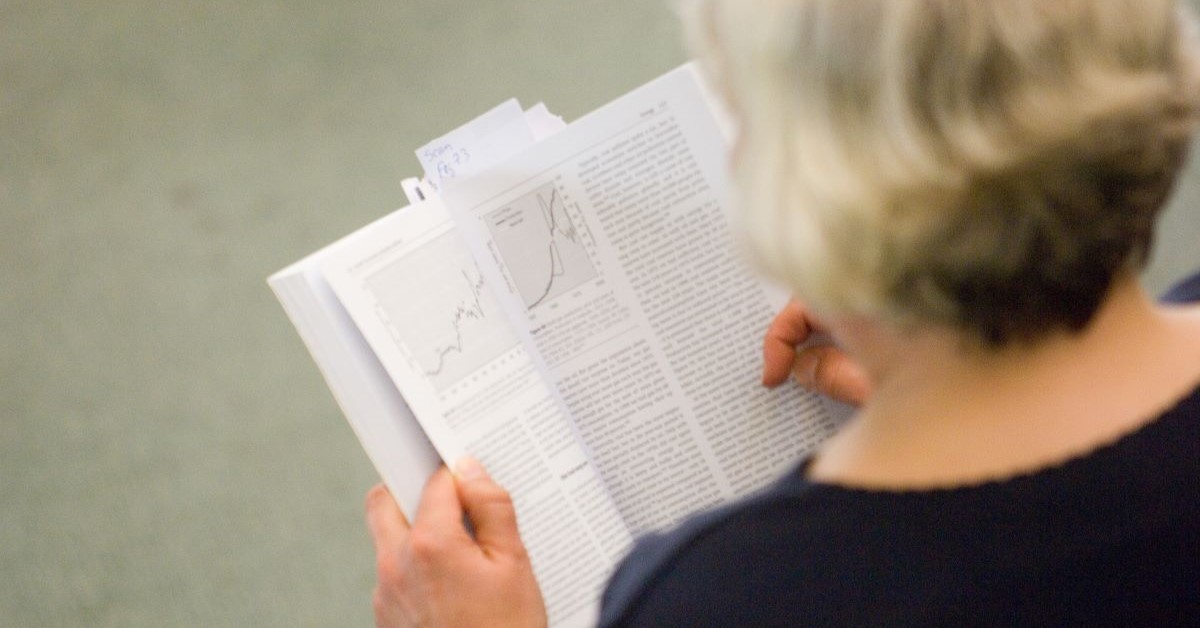How do I reference a working paper… in the Cranfield Author-date style?
16/02/2015

Working papers (also known as discussion papers, research papers, and briefing papers) are used to encourage discussion and share ideas about a topic within a particular community. Some working papers may be in the pre-publication stage, so have been submitted to a journal but have not yet been accepted.
We’re often asked in MIRC how to reference working papers as they don’t fall into the standard item types. Here’s our guidance on how to reference a working paper using the Author-date style used at Cranfield University:
What to include in the reference:
- Author(s) (surname, initials) or organisation/institution
- (Year of publication)
- Title
- Working paper series and/or number (if available)
- Place of publication: Publisher (if available)
If accessing online, add:
- Available at: URL/DOI
- (Accessed: date)
As you can see, the format for a working paper is similar to that of a book or report reference. If the paper comes from a recognised series, which many of them will, include the series and number after the title. Remember to provide as much information as possible so that the reader can locate the paper themselves, but note that some information may simply not be available.
Here are some examples of what your bibliographic references might look like:
Burke, A.E., van Stel, A. J. and Thurik, R. (2009) Blue Ocean Versus Competitive Strategy: Theory and Evidence. ERIM Report Series Reference No. ERS-2009-030-ORG. Available at:http://ssrn.com/abstract=2024822.
Burke, A. E. and van Stel, A. J. (2009) The Entrepreneurial Adjustment Process in Disequilibrium. Tinbergen Institute Discussion Paper No. 09-005/3. Available at:http://ssrn.com/abstract=1330752.
Lins, K, Servaes, H and Tamayo, A. (2015) Social Capital, Trust, and Firm Performance during the Financial Crisis. London: Centre for Economic Policy Research.
Malter, D. (2014) Eclipsed and Confounded Identities: When High-Status Affiliations Impede Organizational Growth. Harvard Business School Strategy Unit Working Paper No. 15-019. Available at http://dx.doi.org/10.2139/ssrn.2505184 (Accessed: 10 February 2015).
Sweeney, M, T. (2000) Linking competitive and generic manufacturing strategies. Cranfield School of Management Working Paper Series SWP 9/00. Cranfield School of Management: Cranfield University. Available at: http://hdl.handle.net/1826/518 (Accessed: 10 February 2015).
As always if you have any questions about referencing, pop into MIRC or contact us.
Feature image from Pixabay. Available at: https://pixabay.com/photos/student-typing-keyboard-text-woman-849824/
Categories & Tags:
Leave a comment on this post:
You might also like…
Level 7 apprenticeships support social mobility and address skills gaps
A recent article in The Times painted a misleading picture of Level 7 apprenticeships, accusing companies of sending senior executives on management courses, and diverting levy funding away from entry-level apprenticeships. The story fails ...
Want to improve your reading skills?
Are you starting to read through the mountains of journals, books or articles for your project or on your course reading list? Let’s start with a few myths about the reading process: You need to ...
From classroom to real-world robotics: My experience at Cranfield University
Hi there! I’m Sakshi Chavan, and I’m thrilled to share my experiences as a recent graduate of the MSc in Robotics at Cranfield University. I graduated in 2024 and am currently ...
Installing the Mendeley Citation Add-in for Word
As well as being a useful tool for storing and managing references, Mendeley integrates with MS Word enabling you to create in-text references and bibliographies. This is possible for many different referencing styles, including the ...
From Pakistan to sustainable manufacturing: My Cranfield journey
Hello my name is Dr Shoaib Sarfraz and my journey into the world of manufacturing began with a deep fascination for how things are made, how they can be made better, ...
Check out the updates to our Bloomberg guide!
Attention all finance enthusiasts, data wizards, and curious minds! Our Bloomberg: a basic guide just got a refresh. This is a great place to go if you’re thinking about getting started with Bloomberg. Here’s what’s ...







Why are some titles in uppercase and others in sentence case
Thanks for your comment. The only parts of these references that are in capitals are reference numbers and codes. If you have any further referencing questions, please contact your information specialist.